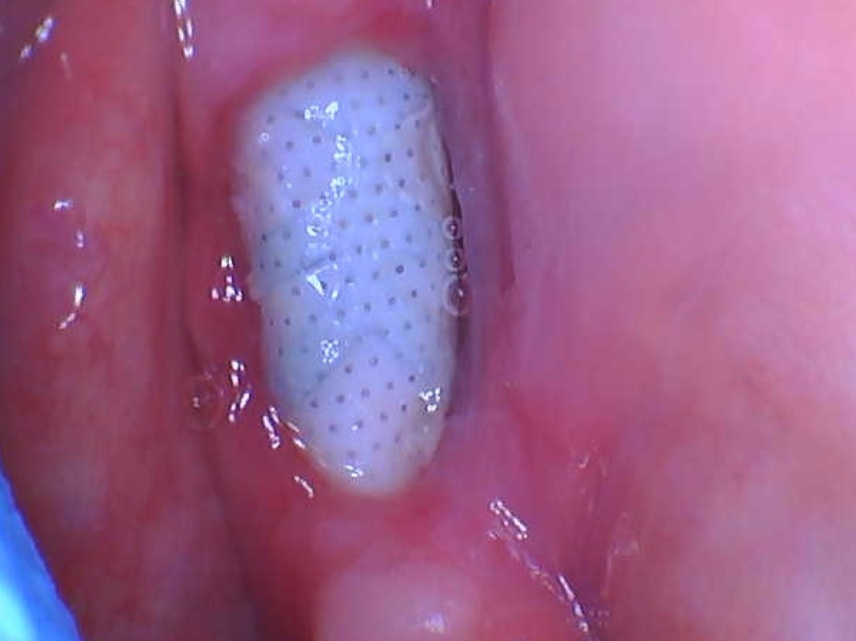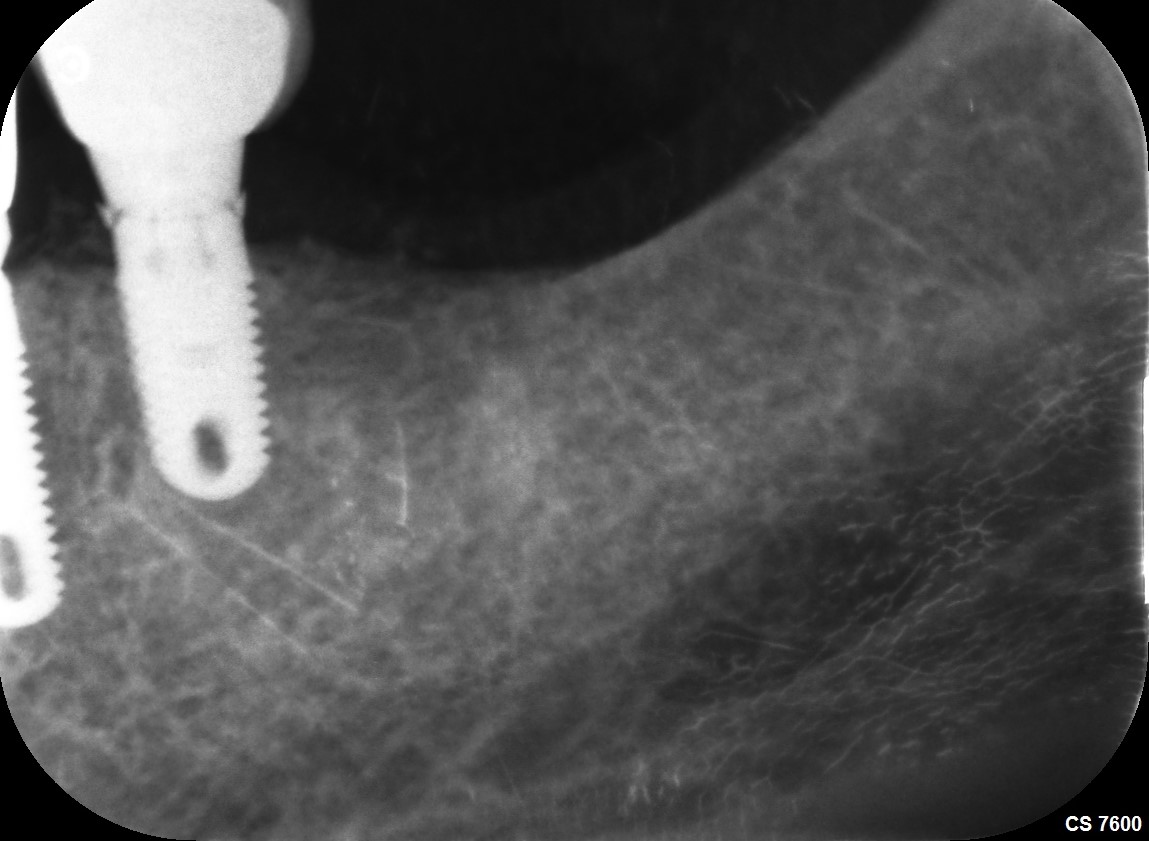Perforated the lingual cortical plate: protocol?
I placed 3 implants in the lower anterior region. The last implant in the third quadrant in #22 site felt like it perforated the lingual cortical plate a little bit at the apex. I took a CBCT and hence came to know about the lingual perforation. This is the first time I have encountered this kind of situation. What is the proper protocol?

18 Comments on Perforated the lingual cortical plate: protocol?
New comments are currently closed for this post.
Peter Hunt
12/2/2019
A lot depends on whether you have clinical symptoms, swelling, pain or obvious infection in the region of concern. The scan only indicates that the lingual plate was thinned, not really penetrated. Apart from this, the implant is housed nicely within the alveolus and should integrate.
If you are not comfortable about the position and are concerned for the long term then you should consider removing it as soon as possible, before it becomes osseo-integrated. It should be able to be counter-rotated out easily enough.
Dr. Gerald Rudick
12/2/2019
As Peter mentions, if you are not comfortable with the implant in this position, then by all means, reverse torque it, and remove....and replace at the same time with a shorter implant with a slightly wider diameter.....it should work out well.... good luck
Dennis Flanagan DDS MSc
12/2/2019
The safest course is to remove the implant and replace it with a shorter implant.
Raul Mena
12/2/2019
Agree with Dr. Flanagan, better safe than sorry.
hhhh2775
12/2/2019
Thank u for all the guide lines respected doctors .
Patient came for check up on the next day , and was asymptomatic .
So for now have not done anything on that implant .
I think it shud osseointegrate without creating problems .
Position is also prosthetically perfect .
Let's wait and watch .
Carlos Boudet, DDS DICOI
12/2/2019
I would not use a wider diameter, as you may not have enough labio-lingual bone width for a wider one.
You may be able to redirect the implant.
Carlos Boudet, DDS DICOI
12/2/2019
If the position is prosthetically perfect, disregard the repositioning.
Comlan
12/2/2019
I totally agree with Peter. Implant is asymptomatic, leave it alone. CBCT has a margin of error; meaning you may not have a true perforation. Even if you do, I've seen implants placed like this with buccal or lingual perforations that last for years. As clinicians, we thrive to avoid things like these but not all cases have to look "textbook" to be successful.
I just have a patient referred to me by another periodontist for issues with an implant site #20, according to the dental radiologist report, this implant was placed right in the opening of the mental foramen from the CBCT image. Guest what: Implant has been there since 1990 and patient issues was not nerve damage but implant crown mobility.
Sean Rayment
12/2/2019
While not ideal, it’s perfectly sterile at that portion of the implant. As long as you haven’t encroached on any structures, perforated the lingual tissue or patient has any symptoms then leave it.
Dr William R Dapper DDS,
12/2/2019
As an additional comment, I would also suggest a simple technique in which I routinely utilize in all cases with or without a CBCT. As part of my protocol and prior to placement of every implant, I meticulously probe and evaluate the osteotomy for any fenestrations and/or dehiscences. Digital palpation of the lingual cortical plate in conjunction with this technique may help in the decision making process .
Yossi
12/3/2019
leave it and learn
Yossi
12/3/2019
as you drilled that osteotomy . the drilling must have begun to get much harder that's a sign
hhhh2775
12/3/2019
Yes sir , as I proceeded in my drilling it got harder exactly , i stopped for checking also , i palpated the sub lingual area also with fingers to feel any breach in the lingual plate .
Looked all fine so I proceeded with more caution .
After final drill I inserted the pilot drill , to see and feel whether my drill is stopping or is it going thru the drill hole in lingual plate .
In fact the drill was stopping , it didn't went thru and thru .Stopped at the height of my drill .
Let's wait and see .
Thank u again .
Ali
12/3/2019
A small perforation is not a big deal , leave it . The more important primary stablity
DreamDDS
12/3/2019
Continued thoughts on this type of case.
1. implant treatment is "crown down" using a model based stent or cad/cam.
2. Implant trajectory is ideally for screw retrieval
3. The set up shown will have to be cement on
4. Implants could have been vertical or slight lingual version and screw retained.
5. This treatment is common and best in my opinion with only two implants, the third is not needed and usually gets in the way of a nice prosthetic result. The right implant is nice, the left cannot be in an ideal prosthetic position, it is angled so far away from the left cuspid. Just my experience with this type of case. Yours will work but bulkier and harder to clean ie, larger embrasure space on left and more bulk to fit bridge over center implant. Put in flange cuts for super floss
Sincerely
Leonard
Dr. Neil Zachs
12/4/2019
I ditto Dr. Rudnick's comment. Remove ASAP and replace with a shorter but slightly wider implant. Better position with no Lingual cortex break will put anyone at ease.
Practical Caveman
12/10/2019
These cases can be surprisingly challenging in term of reducing ridge height for width and how that affects esthetics and oral hygiene. In regard to your question; Practically you're fine, medico-legally less clear, but probably okay. It looks like implant #24 (center) is about midway between the adjacent teeth, may make for interesting transition from implant to restoration. I think I may have placed implants in 22,23 and 26 positions.
Zachshelton4
2/20/2021
How had this case done over time?
















